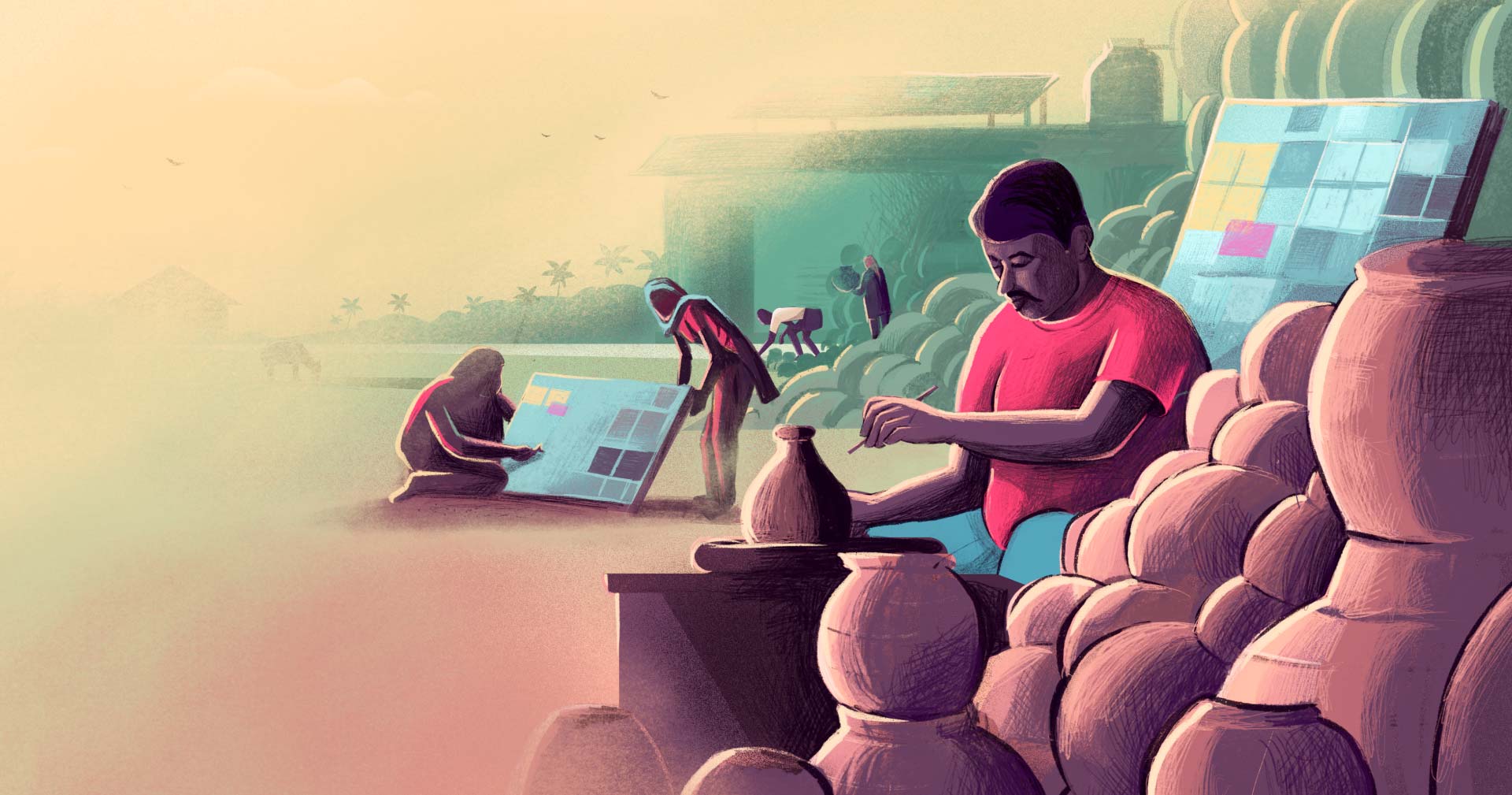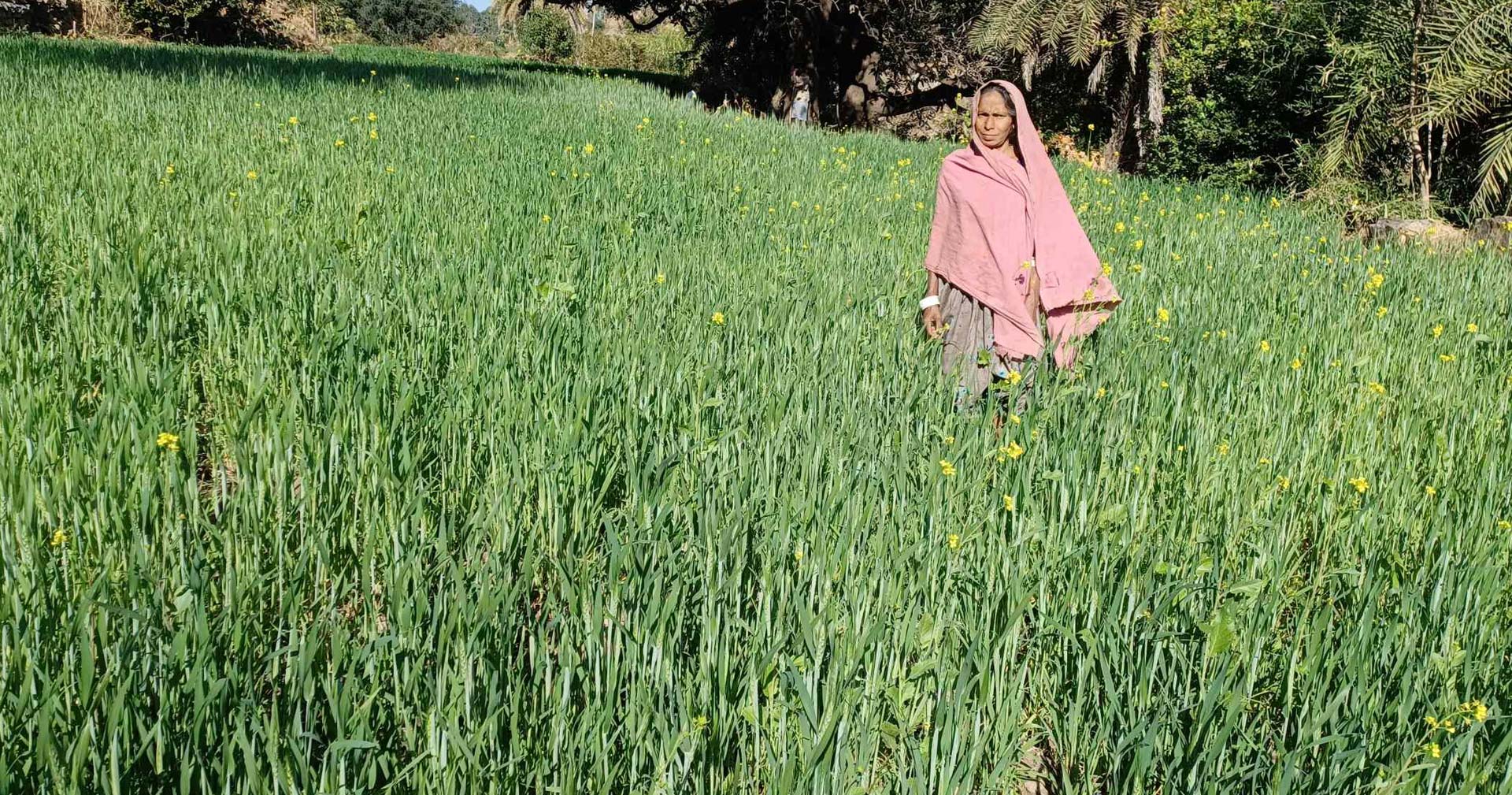Jobs
Climate-friendly renewable energy-based jobs and other low-carbon livelihoods
Home > Solution Areas > Jobs
Developing countries are tasked with the challenge of decoupling emissions from economic growth — historically, economic development has been associated with a rise in emissions. To do so, India needs to develop a robust ecosystem of low-carbon jobs, to fuel economic growth without adding additional emissions to the atmosphere. While many avenues exist to do this, there are specific applications that relate to building green livelihood opportunities for low-income communities and small businesses across the country through decentralised renewable energy.
Decentralised renewable energy (DRE) has the potential to enable the development of livelihood opportunities in areas where energy intermittency affects local productivity and access to services (such as rural areas or urban slums), as well as offer low-carbon alternatives to grow small businesses. Along with increasing energy security and self-reliance, these livelihood solutions ensure wider access to clean energy, increase economic productivity, reduce drudgery, and enable innovation. By supporting income generation, these solutions also promote sustainable livelihoods, build resilience to climate and socio-economic risks, ensure access to quality education and healthcare, and improve living standards for all.
Challenge
India’s employment needs are significant; in April 2023, the country’s unemployment rate was 8.11%. Nearly half of India’s population is employed in the agriculture sector, facing decreasing productivity, debt traps, inefficient and outdated technology, increasing climate risks, and a lack of livelihood alternatives; this is also leading to urban migration primarily for informal work. The Micro, Small and Medium Enterprises (MSMEs) sector, which contributed to over a fourth of India’s GDP in 2022 and currently employs over 11 crore people, is facing high levels of financial distress. Recent crises, including the COVID-19 pandemic and rising energy prices, have aggravated job and business instability for workers across these sectors in rural and urban India. Low-income communities without access to reliable and formal employment are more vulnerable to physical climate risks, as they lack the financial capacity to invest in resilience-building measures; this can increase the risk of climate-induced migration and the losses they suffer when disasters strike.
As India responds to the climate crisis with strong decarbonisation goals, a new economic paradigm of low-carbon growth is emerging that offers solutions for both energy security and livelihood creation, through renewable energy. India’s updated Nationally Determined Contributions (NDCs) capture this ambition; by 2030, the country aims to meet about 50% of its cumulative electric power installed capacity from non-fossil fuel-based resources. It also aims to become energy independent, with the AatmaNirbhar Bharat philosophy at the centre. Beyond mitigation, these measures can also have massive socio-economic benefits through climate-friendly livelihood generation. With the development of green hydrogen production capacity of at least 5 Million Metric Tonnes (MMT) per annum, the National Green Hydrogen Mission, for example, aims to abate nearly 50 MMT of annual GHG emissions, create over 6 lakh jobs, and cumulatively reduce over INR 1 lakh crores of fossil fuel imports. As of 2019, the total workforce in India employed in on-ground solar and wind projects was over 1 lakh, a five-fold increase from 2014 – and this sector could potentially employ more than 1 million people by 2030.
While utility scale jobs lie outside the purview of philanthropic or CSR funding, there are other arenas where livelihoods-based work can take on a climate lens. For instance, the job creation potential of decentralised renewable energy (DRE) applications across sectors, for low-income groups in rural and urban areas, is particularly promising. DRE solutions are crucial, as they tie clean energy access to economic productivity, reducing physical labour required and time spent on labour-intensive activities – and address twin challenges of India’s widespread energy and employment insecurity. The projected market potential is significant. The textile sector, which directly engages an estimated 45 million people, holds a likely market potential of USD 2.4 billion for solar-powered manufacture of fabric and garments. In rural areas, the market for clean energy- powered productive applications including cold storages, sewing machines, looms, rice mills, etc., is an estimated USD 53 billion. These solutions can thus increase access to clean energy and help communities transition away from carbon-intensive business models; help ‘green’ key livelihood sectors such as agriculture, MSMEs, and other small businesses; and modernise crucial equipment and appliances, reducing drudgery and increasing efficiency. DRE solutions are also crucial for adaptation and resilience, providing instant, reliable, and continuous access to electricity in climate-vulnerable areas that can get disconnected from the grid during climate-related disasters like floods and cyclones.
However, widespread adoption of DRE solutions is limited by several factors. There is a lack of adequate support and visibility for DRE applications, and a shortage of job-ready individuals for manufacturing, operations, marketing, etc., in these areas. The upfront costs of DRE are high, and micro-entrepreneurs and small businesses lack the finance required to support DRE solutions at nascent stages or bring them to commercial viability. Access to other sources of finance is not easy. DRE-based government subsidies are emerging but face challenges in reach, effectiveness, and how they are structured. There is a lack of adequate awareness among investors as to the significance of DRE-based livelihoods, and low willingness to invest as these solutions carry a high-risk perception due to their dependence on government subsidies. For more remote geographies, the lack of available engineers to service, maintain and repair these systems can also make them prohibitively expensive.
Solution
Increase low-carbon jobs that
avoid GHG emissions
Enhance quality of life and
opportunities for communities
Increase productive uses of RE
for improved incomes
Range of responses
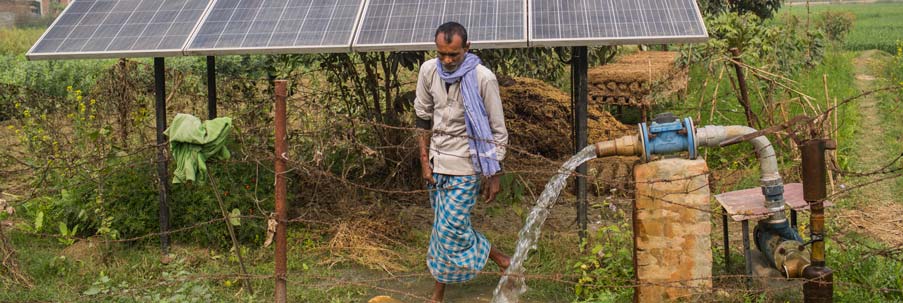

- Farm-gate cold storages, such as biomass-powered or solar cold storages and deep freezers, and bulk milk chillers;
- Irrigation tools like solar submersible pumps, solar surface pumps, and portable solar pump systems (to be supplemented with groundwater conservation and restoration efforts);
- Solar-powered freezers in boats, docks, and fish markets, and solar-powered electric boats for fisherfolk.
- Flour and rice processing equipment, like solar mini flour/rice mills, rice polishers, and rice hullers;
- Pulses and millet processing equipment, like solar mini mills, polishers, graders, and sorters;
- Other food processing equipment, such as solar multi-purpose food processors, mini sugarcane crushers and rollers, and solar dryers;
- Solar-powered processing units for centralised collection/storage at the community level;
- Aquaculture related equipment, including RE-powered processing plants, aerators, and dryers.
Applications for local enterprises include DRE-powered equipment for MSMEs (including cottage industries like textiles and pottery) and small shops and businesses, such as:
- Solar silk reeling charkhas and silk weaving looms, solar charkhas for cotton, solar sewing machines and rope-making machines for textile enterprises;
- Solar pottery wheels and mud blenders for pottery enterprises;
- Solar chapati makers (or rollers) for small restaurants and household-based kitchens;
- Innovations in other DRE applications such as bio-ethanol gel-based clean cookstoves that survive blackouts;
- Electric rickshaws and autos for small transport businesses (for produce/passengers);
- Solar carts and storage for fruit/vegetable sellers.
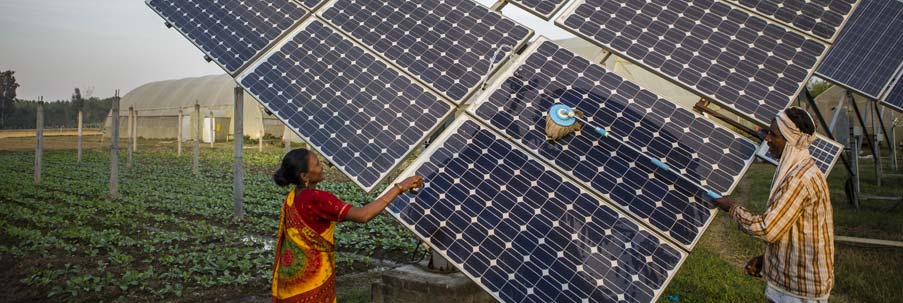

- Renewable energy-powered mini and micro grids at the village/community level, particularly in remote areas;
- Solar-powered trailer systems for off-grid locations, particularly for farmers, or solar power packs for those working off-grid;
- Portable biogas plants for energy generation, biogas cooking grids;
- Pico hydropower plants in rural areas;
- Solar-powered primary healthcare centres (PHCs), and DRE-powered mobile healthcare facilities (such as solar-powered boat clinics, or mobile solar-powered ambulances), particularly in off-grid or remote areas;
- Other community infrastructure like solarised schools and banks.
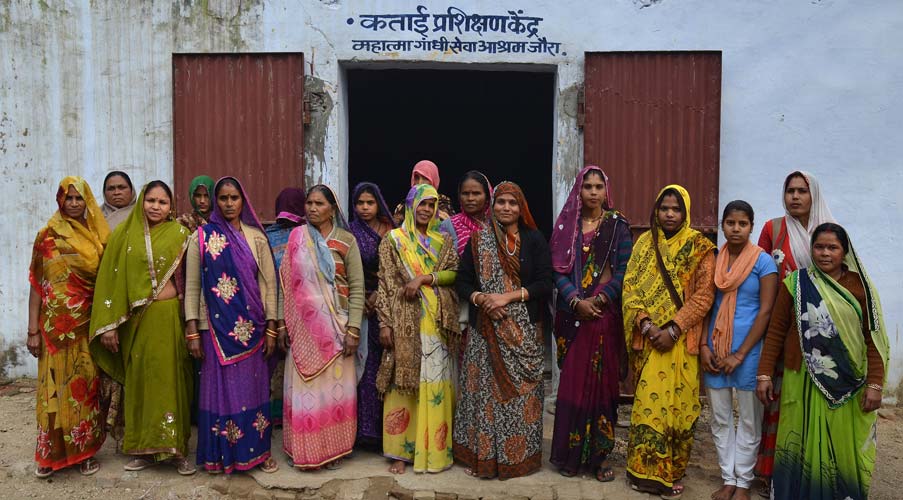

- Women-centric training to provide services at the village/community level, by training women to become after-sales technicians or service agents, and training them to provide effective operations and maintenance for DRE equipment;
- Disseminating training manuals for use and maintenance of technology/appliances powered by DRE at the household and community level;
- Integrating modules on DRE technologies in curricula across local universities (like local agricultural universities), and creating digital training modules for wider access;
- Increasing customer support and awareness for basic troubleshooting or operation of DRE technology at the individual/household level.
- Building capacity for micro-entrepreneurship in the DRE value chain by combining technical training with entrepreneurship modules covering accounting, finance, marketing, etc.
- Building capacity of individual entrepreneurs to seek capital (bank loans, grants, etc.) for DRE applications.
- Building awareness about existing DRE applications and relevant government frameworks or livelihoods schemes that offer support or incentives.
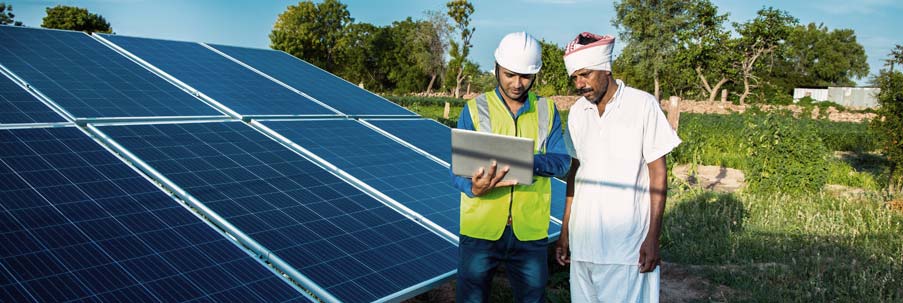

- Accelerators for incubation and pilot support for nascent DRE livelihood enterprises to de-risk investments in early-stage technologies;
- Capital support grants, through dedicated energy access funds at the community level;
- Awareness programmes at the community level regarding available sources of different types of capital for DRE finance;
- Sensitisation of local financial institutions about new DRE applications in the rural market and for off-grid DRE projects to address high risk perception among investors and increase awareness of DRE’s significance.
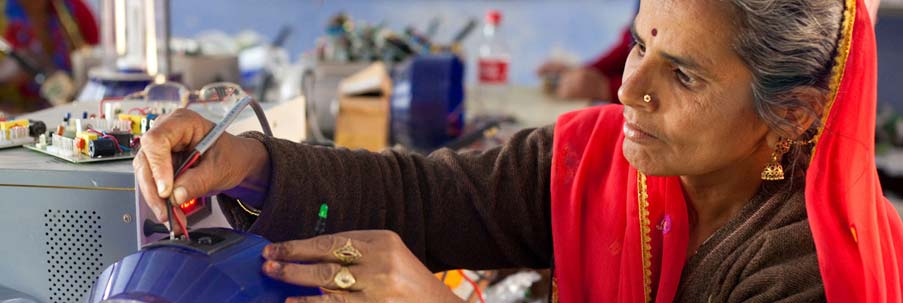

- Research to create energy efficiency benchmarks for DRE applications;
- Research on BIS standards for DRE innovation;
- Research on carbon credits systems to incentivise adoption/purchase/innovation surrounding DRE applications;
- Research on finance products that best serve emerging DRE applications;
- Research on innovative market linkages for DRE-based micro-enterprises;
- Robust digital monitoring platforms, such as Artificial Intelligence-based monitoring of grids or DRE installations, and remote smart monitoring systems for micro-grids;
- Digital platforms to share region-specific information about DRE products and solutions, and promote marketing to support entrepreneurs;
- Policy engagement/support for subsidies for DRE technology at par with other technology.
Target groups


Low income residents of urban, rural, and off grid areas
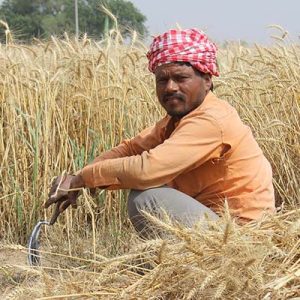

Farming communities


Fishing communities


Women in underserved communities


Tribal communities


Entrepreneurs in agricultural and MSME enterprises, and small businesses
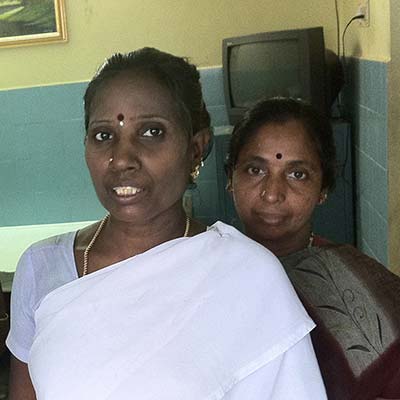

Rural healthcare workers in remote areas.
UN Sustainable Development Goals
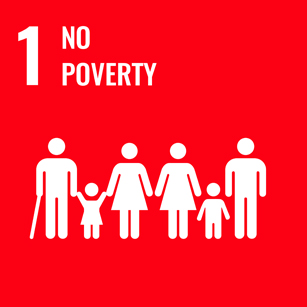

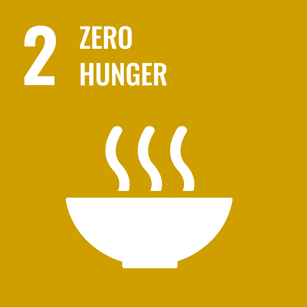





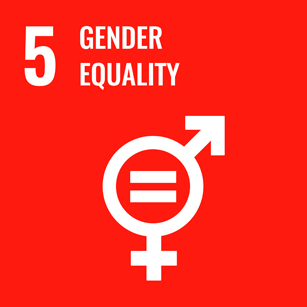

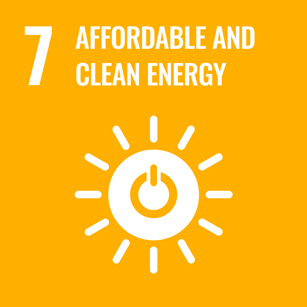







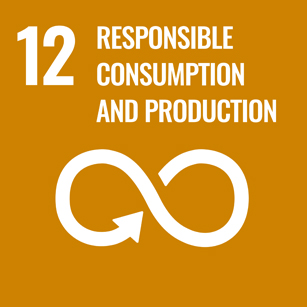



Key considerations
Ensure sufficient capacity building to operate, maintain, and repair DRE
Maintenance and repair can often become limiting factors for DRE in remote locations, if there are no local resources equipped to respond to issues that arise in the system – giving rise to stranded assets. Implementing organisations must provide training sessions on how to use/repair/maintain the concerned DRE appliances and equipment and ensure easy access to updated training manuals for the same, as well as availability of spare parts at strategic locations. Women are typically well-suited to be trained as solar technicians, given they don’t typically migrate away from their villages and the additional stream of income generated from this work enhances their agency and the welfare of their families. Training responses, however, must be context-appropriate and account for gender and cultural considerations. Furthermore, communities must be provided with incentives and support structures to ensure continued monitoring of DRE applications through after-sales services.
Ensure longevity of the project
Solar panels typically have long lifespans of about 20-30 years. To ensure the maximum mileage out of these projects, it’s critical to build long-term thinking into the project design. For example, it is critical to train local communities to be able to maintain and repair these systems, so that they do not become stranded assets if they are damaged or functioning under their full capacity. If grid electricity reaches a particular area that was previously disconnected and was using DRE grids, existing DRE grids (if large enough) can be connected back to the grid to leverage net metering or be used to supplement grid energy to make up for intermittency of electricity supply. Further, given how far DRE solutions have evolved in the past decade, the government has underlined productive-use enterprises (such as health centres, schools, and small community-owned businesses) as a focus for DRE projects – given that these projects can amplify development benefits in a more concrete way than pure-play energy access projects.
Respect local resource-related considerations
Jobs - Projects
This project aims to benefit tribal communities in 38 villages in Kotra block of Udaipur district in Rajasthan by establishing a renewable energy-based value chain for non-timber forest produce (NTFP) and implementing climate-smart agriculture practices.
The tribal population, mainly from the marginalised Bhil and Garasiya communities live in small, remote, and widely scattered hamlets in this block. The region is also subject to climatic variations, resulting in low agricultural productivity and migration.
The project developed by Self Reliant Initiatives through Joint Action (SRIJAN), a non-profit committed to enhancing the overall well-being of the rural poor, aims to improve the resilience and adaptive capacities of farming communities in this block to climate-induced risks, and enhance their livelihood opportunities through renewable energy-based value chain development for NTFPs. A particular focus of this project is on creating sustainable livelihoods for women through collectives.













